“What shall I say of Ireland,” cries Heiric, ” which, despising the dangers of the ocean, emigrates entirely with her troops of philosophers, and descends on our shores ? Her most learned masters become exiles, to place themselves under the obedience of our wise Solomon.” Charles the Bald, this Solomon, this Charlemagne,—for contemporaries give him, too, that glorious name, — had at least the merit of protecting letters, and the Irish especially. They were welcomed at their arrival, and when they could not be detained, their departure was witnessed with regret. ” This did Chromnal charge me to tell when he left, for you Irishmen are always leaving,” says Walafrid to Probus
Not many Freemasons or Templars are aware of the fact that the “Father of Europe” (pater Europae), and the first “Roman Emperor” in Western Europe since the fall of the Roman Empire was named King Solomon. I know this may come as surprise to many of you that King Solomon was actually the Father of Europe and the first “Roman Emperor” in Western Europe, but it is true. However, with that said, let me state that this Western King would not be the first Solomon, but he definitely would forever be known as one of the most influential of this 6th Age.
The true birth name for the allegorical name of King Solomon would be no other than the founder of the Carolingian Empire and King of the Franks, who we know in Latin as Carolus Magnus, in English as Charles the Great, or simply King Charlemagne.
The illuminated revelations that I AM spreading here has to be one of the greatest Templar mysteries ever. The mystery of King Solomon and HiRam Abiff that no other author has been Able to uncover until now. I understand that there will be many of you who read my research that will discount it not as factual, but the facts are that these findings are well documented if you know where to search intuitively and also how to intelligently piece information together. My hopes are to connect the dots for you in the most simple and logical fashion that I know how.
The connections between Charles the Great with King Solomon and HiRam with John Scotus, Saint Bede, and Saint John you will find is truly no coincidence at all and is nothing short of an ancient religious conspiracy. It will help you wrap your mind around what I AM stating here if you read my other articles titled, Saint Bede’s Real Name Part 1 – Introduction to the Facts, my last article on HiRam and of course the evidence that I AM presenting here on King Charlemagne, AKA King Solomon.
Not only have I found a tremendous amount of evidence that Charlemagne was called King Solomon, I also have found that he had given to the abbey of St. Denis “le Hanap Salomon,” the cup that belonged to King Solomon, “which is of pure gold.” In addition , it is said that Charles had also sat in a marble chair modeled after King Solomon’s chair.
Alcuin considered Charlemagne as a “wise Solomon” in erecting his Church at Aachen;
Alcuin considered Charlemagne as a “wise Solomon” in erecting his Church at Aachen. We all know that the Master in the Chair is supposed to occupy the throne of Solomon, equally the Free-count of the Vehm was supposed to occupy the throne of Charlemagne, who it seems was dubbed a successor of Solomon by the Culdee Monk Alcuin. My translation of the Vehm document may be relied upon, as it has been done for me by a Brother whose native language was the Westphalian patois.
There is said to be a letter of the middle of the ninth century (not mentioned by Bro. Dring), written by Eric of Auxerre to Charles the Bald of France, in praise of certain Irish philosophers who were visiting the Court of Charlemagne, as ” servants of the wise Solomon,” who, “as instruction of his countrymen,” attracted thither Greeks and Irishmen. Even Haroun al Raschid sent Carolus an Embassy with presents.
In my last article titled, Hi-Ram Abiff: The Conspiracy of St John the Scot Divine, I detailed how Charles the Great’s rite hand man, Grand Preceptor and good friend of the Temple was no other than Johannes Scotus Eriugena (AKA John Scotus, John the Scot, Saint Bede and Alcuin (Latin Albinus, sumamed Flaccus). We also know John Scotus in the Christian world as Saint Bede and in the bible as Saint John.
In addition to his contributions to the Christian world and Western Governments, John Scotus is also known to secret societies as King Solomon’s rite hand man and Grand Master of the Temple, HiRam Abiff , as well as St. John. The allegorical HiRam Abiff was no other than the chief architect of King Solomon’s Temple, who was murdered by three ruffians during an unsuccessful attempt to force him to divulge the Master Masons’ secret password, John the Scot was also murdered by three ruffians who happened to be his students. But instead of murdering him with Mason Tools like that of the Hiram Abiff legend, they had murdered the Grand Master John Scotus with their pens.
When one researches the story of King Solomon and Solomon’s Temple, it does not take long to understand that this story like most all stories in the bible are told in a allegorical fashion. What this simply means is that nouns which name people, places or things are changed in these stories from their true birth names into a different name that conceals the true name under a pseudo one, but yet still honors the truth in the story being told. This is done by telling an actual real historical event in a hidden manner that will conceal and also honor the truth of the people, places or things involved in these allegorical stories. These brothers honor the light of truth by not publishing lies and at the same divine time, concealing the beautiful persons, pretty places or golden things from our ruthless enemies.
A form of magic, but also an art of war using the pen, books, mind and creative forces to subdue our enemies while honoring our ancestors.
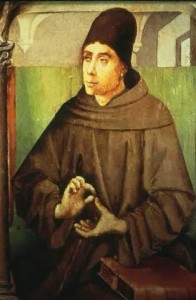 It was in the royal court of Charlemagne that the blueprints had been drawn up by the true Grand Architects of the world wide plan to build Solomon’s Temple. There is no other king in history where you can locate evidence tying them to King Solomon like that of King Charles during and after his reign. This evidence is simply indisputable. However, finding the key evidence of these facts do not lie entirely with Charlemagne, but also in studying his little known, but most famous Grand Preceptor named John Scotus who we also know by the allegorical name of Alcuin, but known to Freemasons as HiRam Abiff.
It was in the royal court of Charlemagne that the blueprints had been drawn up by the true Grand Architects of the world wide plan to build Solomon’s Temple. There is no other king in history where you can locate evidence tying them to King Solomon like that of King Charles during and after his reign. This evidence is simply indisputable. However, finding the key evidence of these facts do not lie entirely with Charlemagne, but also in studying his little known, but most famous Grand Preceptor named John Scotus who we also know by the allegorical name of Alcuin, but known to Freemasons as HiRam Abiff.
It is really easy to connect these conspiracy dots because at the same time that it is well documented that John Scotus was Grand Preceptor to King Charlemagne, there was also another alleged Grand Preceptor in the same royal court and there at exact the same time of John Scotus, but his name wasn’t John, it was Alcuin. This allegorical name of Alcuin you will quickly find is the same person as John Scotus because the facts are Kings do not have two Grand Preceptors and the name Alcuin simply means “friend of the temple.”
‘By its proprietor, M. de Speyr-Passavant. Paris, October, 1829; Fontaine, Rue Hautefeuille. 8vo. No. XVI. The monk Alcuin, when ho was preceptor to Charlemagne and his sons, undertook the correction of the numerous errors which, by the unskilfulness of copyists, had crept into various texts of the Bible. The work accomplished, he made a present of it to Charlemagne, on the day of his coronation, by the hands of his beloved disciple Nathaniel. Amidst the troubles which succeeded the death of the great emperor, this Bible became the property of the monastery of Prum, in Lorraine, and then that of the monastery of Montier-Grand-Val,
The Private Devotions of Lancelot Andreas,Bishop of Winchester, (c. Translated from the Greek and Latin, by the Rev. Peter Hall, B.A. London, W. Pickering.)
To go back for three centuries, even in forms
of devotion, is a treat to the reader of modern
works. This reprint of the celebrated Bishop
Andrews is further remarkable for the learning
of its pious author.
In the excerpt I quoted above from the “The Literary Gazette: A Weekly Journal of Literature, Science …, Volume 14, By Henry Christmas, and George Augustus Frederick Fitzclarence (1st Earl of Munster),” it states that Alcuin not only rewrote the Bible with his sons, he had also presented it as a gift to Charlemagne, the first Roman Western Emperor at his coronation ceremony. This bible is what we know today as the New Testament which simply means New Law under a “newly united” Universal Brotherhood that we know of today as the Catholic Church.
Saint Bae-Dan’s book, De Templo or On the Temple, was simply the first book published in the history of the world with the same wisdom Freemasons teach to this day on the Temple of Solomon which can be successfully traced back to and verified as fact to originate with Saint Bede, AKA John Scotus. In addition, many Mason historians place the origins of Freemasonry about this time. Then couple this with the facts that King Charlemagne was actually called King Solomon and John Scotus was his Grand Preceptor, we have now solved the mystery of who the real King Solomon is and his Grand Architect, HiRam Abiff.
As I stated above, the name Alcuin means “friend of the temple” and is really just an allegorical name for the other allegorical John Scotus (St John the Divine), and Saint Beda (Baedan) who was born in Iona, Scotland and is a descendant of Saint Baithan Mor. You will find that Saint Bede was said to be born in 675 AD and then died in 735 AD (the same year Alcuin is born). Alcuin was said to be born in 735 AD, but also was a student of Saint Bede who happened to die that very same year that Alcuin was born making this alleged story a true fabrication where just the names, dates, coincidences and proves falsities that CANNOT be denied by any man or woman who has common sense. Yes, I know it is confusing, but that is the whole point of allegorical stories, peoples and ancients religious conspiracies.
The ancestor of Saint Beda (Baedan), Saint Baithan Mor was actually an Irish High King who will find just like Saint Beda, there are also various spellings of Baithan Mor’s name, such as King Tech- baoithin, Baithen, Baithin, Baithan, Baetin, Baitan Mor , (“Baithen, Baedan or Aedan the Great”), or Boythan, Bothan, Bathan, Baeda, Baedan, and Saint Aidan, Aedh-og or Mo-Aedh-og who was Áed mac Ainmuirech high-king of the Northern Uí Néill. These were the Picts and Culdee Druids who became Christians under Saint Columba and the Tribe of Dan who I had wrote about in my article titled, The Origins of the Tribe of Dan – Part 1. In that article I had also made the revelation that this Ireland born Baithan Mor was the biblical Jacob of the New Testament whose tribe then became known simply as “Israel” and also now as the Tribe of Dan.
The names, countries, tribes and webs are thick, but that is the whole point of the Brotherhood for the Ends Justifies the Means and we cannot have ORDO without CHAO.
As John Duns Scotus says;
Scotia me genuit,
Anglia me suscepit,
Gallia me docuit,
Colonia me tenet.
Scotland bore me,
England received me,
France taught me,
Cologne holds me.
The above short poem by John Duns Scotus really sums up how the Brotherhood has operated for the past two thousand years. The current conspiracy cliche term “New World Order” is truly an honorAble “Old World Order” that has been in existence for approximately 3,000 years well before the Old and New Testaments. A Brotherhood that is not just contingent upon the borders of the countries in which we call our homes or the beautiful flags that we honor in our many lands. This was the New Foundation with a New Beginning under the New Law of the New Testament. A newly formed Brotherhood creation of a world wide united Roman Empire with Charles the Great being heralded as the reborn “Western” Wise Sun King who would become the current allegorical figure that we know of today as King Solomon. This would be when Charlemagne would institute the double headed eagle as well.
It always has been and always will be about a world wide brotherhood love affair in the building of Solomon’s Temple. A brotherhood that has not always been united in brotherly love, but soon will be so help us God, AMEN!
For more detailed research on the Charlemagne, Solomon, John Scotus, Beda, Alcuin and HiRam Abiff connection, please see the links below:
Alcuin accordingly instructed Charlemagne and his family
Alcuin accordingly instructed Charlemagne and his family in rhetoric, logic, mathematics, and divinity. “France,” says one of our best writers of literary history, with some degree of truth, ” is indebted to Alcuin for all the polite learning it boasted of in that and the following ages. The universities of Paris, Tours, Fulden, Soissons, and many others, owe to him their origin and increase, those of which he was not the superior and founder being at least enlightened by his doctrine and example, and enriched by the benefits he procured for them from Charlemagne.” Alcuin, it is alleged, however, forbade the reading of the classical poets. In 790 he went to England in the capacity of ambassador, and returned to France in 792, never again to visit his native land.
“Happy are thy men, and happy are these thy servants, which stand continually before thee,- and hear thy wisdom.” Charles, who in all probability had frequently invited Alcuin to his court without success, did not suffer these words to escape him, but in his reply, desired Alcuin, if he believed what he said to be true, to come and gather with him the flowers of wisdom1. The answer of Alcuin, in which he declines the invitation, reveals the cause which had driven him from court: he begs the king to excuse him, as he could find happiness only in the land of peace, and not in the regions of discord and war. “Of what value,” he asks, “would be the weakness of Flaccus amid arms? What a timid hare amongst wild boars? What among lions, an innocent sheep, that had been nourished and brought up in peace, and in ignorance of battles?”
The splendid establishment which Charles had assigned him was as little congenial with his disposition, as the burthen of secular occupations. The manner in which the French monarch endowed the schools which he established, is worthy the imitation of modern governments.
Sedulius Scotus, above all, is fond of comparing Charles the Bald with King Solomon
The figure of Solomon looks remarkably like Charles the Bald himself. The manuscript concludes with a portrait of Charles enthroned as king
a wonderful golden cup enriched with precious stones which had belonged to King Solomon, and a rock crystal vase from the Temple of the wise man—both the gift of Charles the Bald. He, being abbot, made it his custom to attend “the duties of his station at the Abbaye, on the solemn festivals, passing the day in pious conversation with the monks and in religious observances.” He also made considerable donations,* added to the many lamps which are kept continually burning before the shrines, and increased the number of wax tapers employed in the services of the church. Then further, amongst the curiosities, were the nail of a griffin upon a silvergilt animal; a unicorn’s horn six feet high, sent by Aaron King of Persia to Charlemagne; the hunting horn of Roland, nephew of Charlemagne; and the lantern which was used at the betrayal of our Lord in the Garden, called the Lantern of Judas. The latter was of copper, embellished by rock crystal, through which the li^ht shone. (This was also the gift of Charles the Bald). The mirror of the prince of poets, Virgil, which was of jet; the sword of the genereuse Amazone, Jeanne la Pucelle. Of the beauty of the croziers and pastoral crosses, the mitres and episcopal rings, Dom Millet’s description leaves no doubt; and of the magnificence of the abbots, and the splendour of their monastery, we have more than ample evidence. As an old epigram puts it: Au tems passe du siecle d’or,
Crosse de dots, Eveque d’or,
Maintenant changent les lois,
Crosse d’or, Eveque de bois
John Scotus at the palace and teacher of King Charles the Bald;
John Scotus, who was born, no doubt, in the first quarter of the ninth century, went abroad before 847, since Prudentius, who by that year was already bishop of Troyes (Hist, lit. de la France, v. 241), speaks (De Prcedest. ch. i. p. 1012) of their former intimate friendship, which was clearly formed when both were attached to the palace of king Charles the Bald, afterwards emperor. That John was employed there as a teacher, though possibly not even a clergyman (‘ nullis ecclesiastic® dignitatis gradibus insignitum,’says Prudentius, ib. ch. ii. p. 1043), appears from the tract written in the name of the church of Lyons, and attributed to Floras the deacon,’ adversus Joannis Scoti erroneas definitiones’ (migne, cxix. 103 A);
John is here referred to as ‘quasi scholasticus et eruditus’ (compare the rhetorical preface to John’s book ‘De Praedestinatione,’ Migke, cxxii. 355 A, and the ‘Liber de tribus Epistolis,’ xxxix, in Migne, cxxi. 1052 A, commonly ascribed to Remigius of Lyons, but more probably written by Ebo of Grenoble; see H. Schrors, Hinkmar Erzbischof von Rheims, p. 128, n. 11, Freiburg, 1884). It was as a man of learning that John was requested by Hincmar, archbishop of Rheims, and Pardulus, bishop of Laon—not, as Neander says (Hist. of Christian Religion, vi. 196, transl. Torrey 1852), by the king—to write a reply to the monk Gottschalk, whose exaggerated statement of the Augustinian doctrine of predestination had led to his condemnation by the second synod of Mentz in 848, and again by the synod of Quierzy, a year later. John produced his tract ‘He Praedestinatione’ early in 851 (see Schrors, p. 115, n. 24, cf. p. 117, n. 30).
Opening with the announcement that true philosophy and true religion are identical, he urged against Gottschalk’s assertion of predestination to evil that such a doctrine was incompatible with the unity of God, since unity of essence implies unity of will, and that, as evil is merely the negation of good, it lies outside God’s knowledge; otherwise he would be the cause of it, since what he knows he causes. Predestination can therefore only be spoken of in the sense that God permits his creatures to act according to their free will; the only limit to the possibility of evil-doing is set by the order of the world, within which the creature moves and which he cannot overpass. John’s reasoning was not well adapted to its purpose. His friends were startled by the unusual nature of his exposition; and his contribution to the controversy only brought upon him indignant and contemptuous reproofs. His views were condemned by the synod of Valence in 855, where his arguments were described (can. vi., Ma>”si, Concil. Collect. ampliss. xv. 6) as ‘ineptas quaestiunculas et aniles pene fabulas Scotorumque pultes’ (‘Scots’ porridge ‘); and the condemnation was repeated at the synod of Langres in 859 (can. iii. Mansi, xv. 537 seq.)
Whether before or after the composition of his tract on predestination, it is probable that John also engaged in the controversy touching the Holy Communion which agitated the Frankish domain in the second quarter of the ninth century. In 844 Paschasius Radbertus, the advocate of what became the accepted catholic doctrine, presented a revised edition of his book, ‘De Sacramento Corporis et Sanguinis Christi,’ to King Charles; and in the course of the following years the question which he raised was eagerly discussed. That John did contribute to the controversy has been argued from the fact that a treatise on the subject bearing his name was condemned by the council of Vercelli in 1050 (lanfranc, de Corpore et Sanguine Domini, iv., Migne, cl. 413 seq.); but this treatise is generally believed to be the work of Ratramnus of Corbie. Still, the fact that a work very likely not John’s was attributed to him is an indication that he was known to have taken part in the controversy against Paschasius; and the reference made to his teaching on the subject (hincmar, de Prcede*t. xxxi, Migne, cxxv. 296), as well as the title of Adrevald’s book ‘de Corpore et
Sanguine Christi contra inept ins Joannis Scoti,’ points in the same direction (cf. Mabillon, Acta Sanctorum O.S.B., sec. iv. 2, praef. pp. xliv-xlviii, lxiv-lxvii; and C. Von Noorden, Hinkmar Erzbischof von Rheims, p. 103 n. 2, Bonn, 1863).A further trace of John’s activity at the court of Charles the Bald is furnished by his translations from the Greek. The growing fame of the abbey of St. Denys had added a new interest to the name of Dionysius the Areopagite; and when the writings falsely ascribed to him were presented by Michael the Stammerer to Lewis the Pious in 827 (hilduin, Rescript. adlmper.Ludov., iv. ;mig\”e, cvi. 16), there was a natural desire to have the means of reading them. At length, by the command of Charles the Bald, John Scotus made a translation (under the name of loannes Ierugena) of the books ‘ De Caelesti Ierarchia,’ ‘de Ecclesiastica Ierarchia,’ ‘de Divinis Nominibus,’ ‘de Mystica Theologia,’ and ‘ Epistolae.’ To the whole he subjoined a set of verses in which he extolled the glories of Greece by comparison with those of Rome ( Opp. p. 1194). Whether owing to these verses, in the presence of an angry dispute between the pope and the patriarch of Constantinople, or to the NeoPlatonic complexion of the work itself, the orthodoxy of the book was doubted, and Nicolas I ordered that it should be sent to him for approval. The date of this letter, which is only preserved as a fragment in the ‘Decretum’ of Ivo of Chartres, iv. 104 (Migjfe, clxi. 289 seq.), is quite uncertain (jafpe, Registr. Pontif. Roman. No. 2833, ed. 2), and it has been placed variously in 859 (christlieb, p. 27), 861-2 (floss, p. 1026), and 867 (migxe, cxix. 1119).
The confusion has survived the exposure of the fraud;
These are almost the only facts known to us on contemporary authority concerning John’s life. The inference from a letter to Charles the Bald, written by Anastasius ‘ the librarian ‘ (migne, cxxix. 739 seq.), that he was already dead in 875, is not justified by its language (cf. Christlieb, pp. 52 seq.); indeed, some verses by the Scot enable us to guess that he was still in Francia in 877, the year of his protector’s death (Opp. pp. 1235 seqq.; cf. Huber, p. 120). It is not until the twelfth century that we obtain from the writings of William of Malmesbury a fuller notice of him.
William describes in the ‘Gesta Pontificum,’ v. 240 (pp. 392 seq., ed. N. E. S. A. Hamilton), the honour in which the sage—a man little in person and of a merry wit—was held by Charles the Bald, and the intimacy with which they were associated, both in serious studies and in the familiar intercourse of daily life. In this connection two stories of John’s lighter mood are told. One is the famous answer to the king’s ‘Quid distat inter sottum et Scottum? —’ Mensa tantum,’ in regard to which it is to be observed that the play upon ‘Scot’ and’ sot’ was not, even in John’s day, much less in William’s, a new one.
After this William gives an account of his works and his later life, which he repeats almost word for word in his letter to Peter (printed by Gale in Testimonia, ubi supra, and with a collation of a second manuscript by Poole, pp. 317-20) and, more briefly, in his ‘ Gesta Regum,’ ii. 122 (i. 131 seq., ed. Stubbs). This narrative has, however, been often suspected because it relates how John was invited by King Alfred to England, and what befel him there; and it has been generally believed that this account has arisen from a confusion with another John, spoken of by Asser, bishop of Sherborne, in his ‘ Life of Alfred.’ Asser, in fact, makes two separate statements.
In one he says that Alfred sent to Gaul to obtain teachers, and called over two men, Grimbald (who has been mixed up, to the discredit of this notice, with a very late story bringing in the schools at Oxford, which was interpolated by Archbishop Parker in his edition of Asser) and John, ‘Johannem quoque aeque presbyterum et monachum, acerrimi ingenii virum, et in omnibus disciplinis literatoriae artis eruditissimum, et in multis aliis artibus artificiosum’ (‘ De Rebus gestis ^Elfridi’ in Monum. Hist. Britann. i. 487 B). In the second passage Asser states that Alfred set over his newly founded monastery of Athelney ‘Johannem presbyterum monachum, scilicet Ealdsaxonem genere’ (p. 493 c), i.e. a continental Saxon by descent.
The specification has the appearance of intending a distinction from the other John; and mediaeval writers uniformly agreed, as is not at all unlikely, that the latter, the companion of Grimbald, was the same with John Scotus. Asser relates that John the Old Saxon was attacked in church by the servants of two Gaulish monks of his house, who wounded but did not slay him.
William of Malmesbury’s account of John Scotus has some points of resemblance to this, but more of difference. He says that John quitted Francia because of the charge of erroneous doctrine brought against him. He came to King Alfred, by whom he was welcomed and established as a teacher at Malmesbury, but after some years he was assailed by the boys, whom he taught, with their styles, and so died. It never occurred to any one to identify the Old Saxon abbat of Athelney with the Irish teacher of
Malmesbury—with the name John as the single point in common—until the late forger, who passed off his work as that of Ingulf, who was abbat of Croyland towards the end of the eleventh century (‘ Descr. Comp.’ in Ber. Angl. Script. post Bedam, p. 870, Frankfurt, 1601); and the confusion has survived the exposure of the fraud. It is permissible to hold that William has handed down a genuine tradition of his monastery, though it would be extreme to accept all the details of what happened more than two centuries before his birth as strictly historical (see an examination of the whole question in Poole, app. ii.) William adds that the body of the ‘ Sanctus sophista Johannes ‘ lay for a time unburied in the church of St. Lawrence, but was afterwards translated to the greater church, where it was placed at the left hand of the altar, with an inscription which he records (Gesta Pontif, Ep. ad Petr. Gest. Reg. 11. cc.) Towards the end of the eleventh century, however, the tomb was removed by Abbot Warin, who destroyed also the monuments of previous abbats, and stowed away in a corner of St. Michael’s Church (Gest. Pontif. v. 265, p. 421).
The verses upon the tomb declared John to be a martyr, and he has accordingly been identified with the Joannes Scotus who was commemorated on 14 Nov. But this Joannes Scotus was bishop of Mecklenberg, and suffered martydom on 10 Nov. (adam Op Beemen, Gesta Hammaburg. Eccl. Pontif. iii. 50; cf. Mabillou, Acta SS. O. S. B., sec. iv. ii. 513). After 1586, in consequence no doubt of this confusion, the name was omitted from the martyrologies (see Poole, p. 327 and n. 48).
Related articles

Moe is the founder of GnosticWarrior.com. He is a father, husband, author, martial arts black belt, and an expert in Gnosticism, the occult, and esotericism.

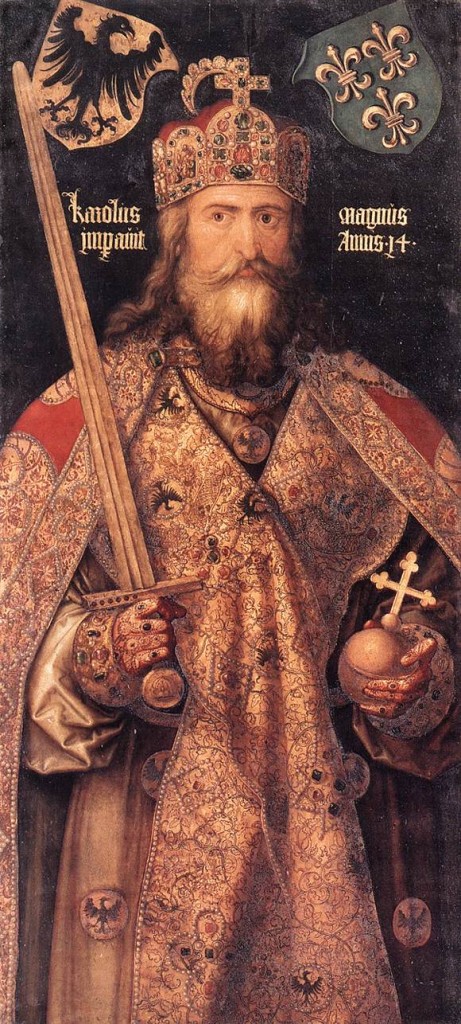


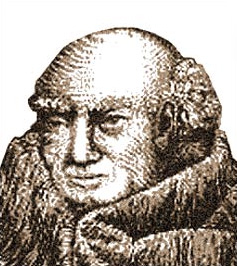
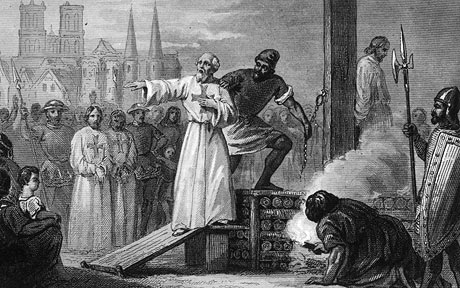

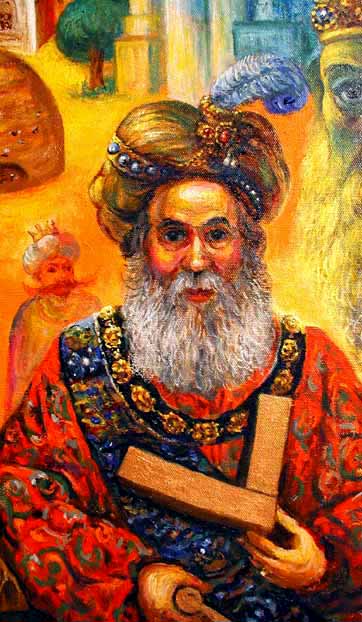

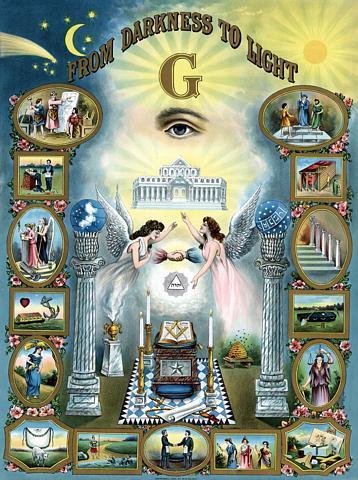
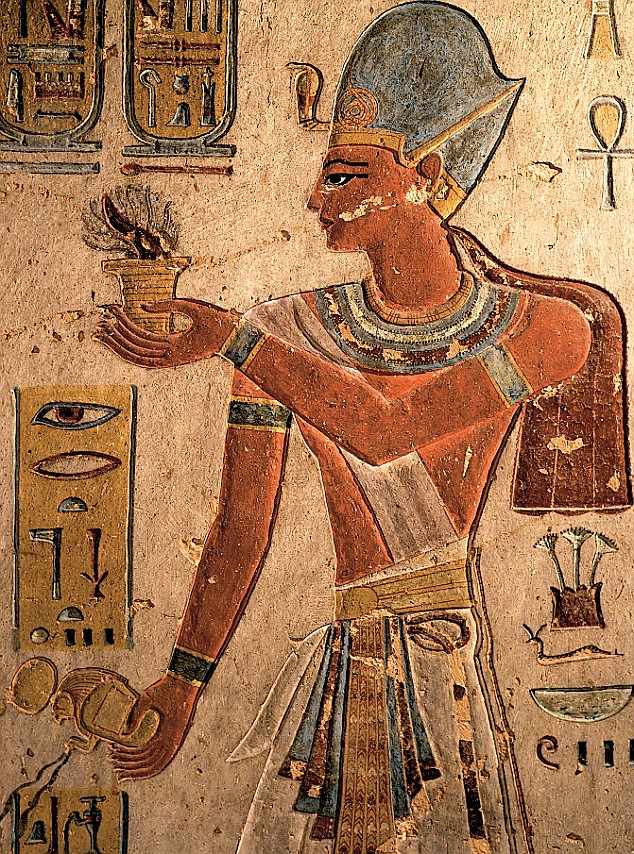

You’re either delusional or intentionally deceitful. Either way you’re one sick kitten.
Amazing that you added bits to intentionally mislead.
Quite brilliant but not entirely ethical. Interesting read though.